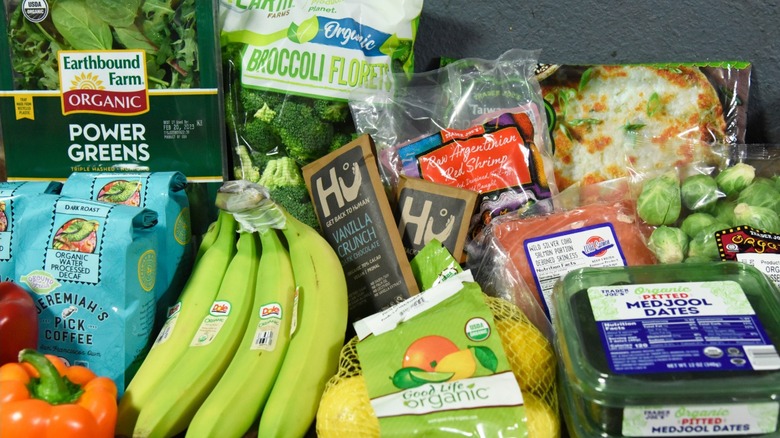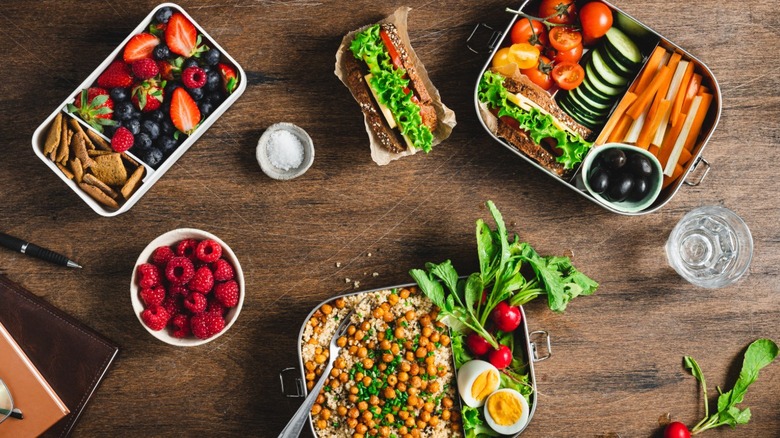What Is The 5-4-3-2-1 Grocery Shopping Method (And Does It Work)?
We've all been there: spent a small fortune on groceries and realized soon after that we still can't cook anything. This relatable scenario is likely the reason why the 5-4-3-2-1 grocery shopping method went viral on TikTok. The video was created by social media influencer and chef Will Coleman. In it, Coleman demonstrates how to follow the method by choosing five vegetables, four fruits, three proteins, two sauces, and one grain. Items are mixed and matched with the idea that you can make a number of meals, keeping costs low.
Coleman stated he was able to make four to six meals for himself and one other person from a grocery haul that totaled less than $99 dollars. (It should be remembered, however, that some grocery store items are getting more expensive and that buying these items may result in your shop being pricier.) Viewers were intrigued by his simplistic approach and the method soon gained traction, but is this strategy as effective as it appears to be? Yes, but it's not for everyone.
@chefwillco GROCERY SHOPPING TIPS FOR BEGINNERS (and those who are looking to save money.) If you're not the best at grocery shopping or never know what to get, don't sweat it or be embarrassed! Let's step up your game with my 5-4-3-2-1 method. Tag @Whole Foods Market in the comments if you think I should make this a series 🫶 #adulting #tips #groceryshopping #hauls #howto #cooking #budget #nyc #budgetmeals #comewithme #vlog #explorepage #fyp #viral #nyc #comewithme
Other people on social media shared videos of their positives experiences implementing the 5-4-3-2-1 method; some users reported spending between $60 to $100 on groceries for a week's worth of meals. There is no doubt that those shopping for themselves or two people who will be eating the same meals benefit most from this method. However, it may not be as effective for large families and those who who don't like many types of vegetables.
Alternatives to this method
Although there's no limit on the quantity of items that can be purchased per category (for your four fruits you could buy seven apples, one bag of grapes, five mangoes, and four bananas), large families, and especially families with picky eaters, may not fare well following the 5-4-3-2-1 grocery method. This is because it will be challenging to find specific items that everyone likes or agrees on. This is particularly true of the grain category; being restricted to only one type of grain isn't ideal for kids or other individuals who want to eat a broader variety of foods. With that in mind, some individuals have tailored the method to suit their preferences by switching around the categories assigned to each number. Others have even created their own categories, including "snacks" and "frozen meals."
If, whether due to family size or differing preferences, you need more items from each category, then the 6-to-1 method may be the shopping rule you need. This grocery shopping strategy is another from Will Coleman and is an earlier iteration of the 5-4-3-2-1 method. It's nearly identical except each category has one more option added to it — six vegetables, five fruits, four proteins, three sauces, two grains and one fun item.
Regardless of what grocery shopping rule you or your family follow, these methods are only successful if the food purchased is actually used to make meals or snacks, not left to spoil. So, be sure to buy items you will definitely eat.

